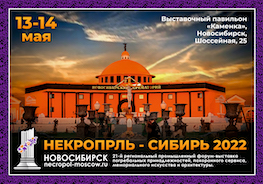NT Library collections manager Don Christophersen with Charlie Flannigan's drawings at the Little Bit of Justice exhibit.(ABC Radio Darwin: Conor Byrne)
ABC Radio Darwin / By Miranda Tetlow and Conor Byrne
Possibly a scene depicting Charlie Flannigan's retreat after the murder of Sam Croker in 1892.(Supplied: SA Museum)
You're about to be hanged for a murder you committed. You can hear the prison workers testing the new gallows in the yard to make sure the town's first hanging goes to plan.
Aboriginal and Torres Strait Islander readers are advised that the following story contains the names and images of people who have died.
As the outside world debates your fate, your mind focusses on a blank piece of paper in a shaft of light on the floor.
With your hands manacled, how do you tell your story? Do you proclaim your innocence? Explain your guilt?
Aboriginal-Irish man Charlie Flannigan was illiterate, so he did neither. Or maybe he did both.
Over the several months he spent in solitary confinement on death row in the Northern Territory's Fannie Bay Gaol in 1893, he sketched his memories in 82 curious drawings.
The drawings could tell the story of exactly why he shot dead Auvergne Station acting manager "Greenhide Sam" Croker over a game of cards on September 20, 1892.
But nobody will ever know what went on in the mind of the mysterious pioneer cattle drover and champion jockey.
=
Charlie Flannigan appears to have been influenced by an old Punch magazine masthead.(Supplied: SA Museum)
NT Library collections manager and Muran man Don Christophersen has spent years agonising over the story and Flannigan's drawings.
Drawing on life experience
And 127 years later, Mr Christophersen is displaying some of the artwork of this little-known man in the appropriately-named exhibition, A Little Bit of Justice.
The drawings feature intricate details of horses, buildings, landscapes, scenes, and the ship which brought him to trial in Darwin.
"He's telling the story in his drawings, and there's no violence in his drawings," Mr Christophersen said.
"There's horses in just about every drawing.
"I think his love of architecture is because he was probably building structures out on the cattle stations.
'A guy that won't take any rubbish'
According to the story at the time, the murder was the result of a card game disagreement or a comment made by Croker during the game.
There was existing animosity with master stockman Croker.
"We don't know exactly what it was. It might have been a bit of bullying," Mr Christophersen said.
"Flannigan's the sort of guy that won't take any rubbishing."
The two men agreed to run for their guns.
A cool head until the end
Flannigan briefly took charge of the cattle station, ordering the terrified staff to help bury Croker, before riding 380 kilometres south-east to Halls Creek where he handed himself in.He was extradited to Darwin from Wyndham, Western Australia, aboard the steamer Rob Roy for his eventual six-hour trial in February 1893.
The Northern Territory Times and Gazette report says: "Not the merest attempt was made on behalf of the prisoner to justify the murder or to establish a reasonable motive for the frightful act."
The report says prisoner Flannigan kept a cool head while the executioners scrambled to arrange the first legal execution in the NT.
Taking his place in history
Mr Christophersen said there was a local and interstate public outcry against the execution — which was to be held with nine other hangings.
"People are horrified. They said: 'I thought we were going to be the civilised people here. And yet, we're going to hang 10 people.'
Some death sentences were commuted to life sentences in response to the outcry, but Flannigan was hanged in Fannie Bay Gaol just after 9:00am on July 15, 1893.
Charlie Flannigan was born at Marion Downs in Queensland in the 1860s.
"I'm really happy that we can give Flannigan that place in history, where it should be, not as a crazed madman who killed the stockman manager," Mr Christophersen said.
See the drawings in the NT Library from March 10 until June 27, 2021.
Related Stories: Death, murder and execution: Fannie Bay Gaol's grim history brought back to life











